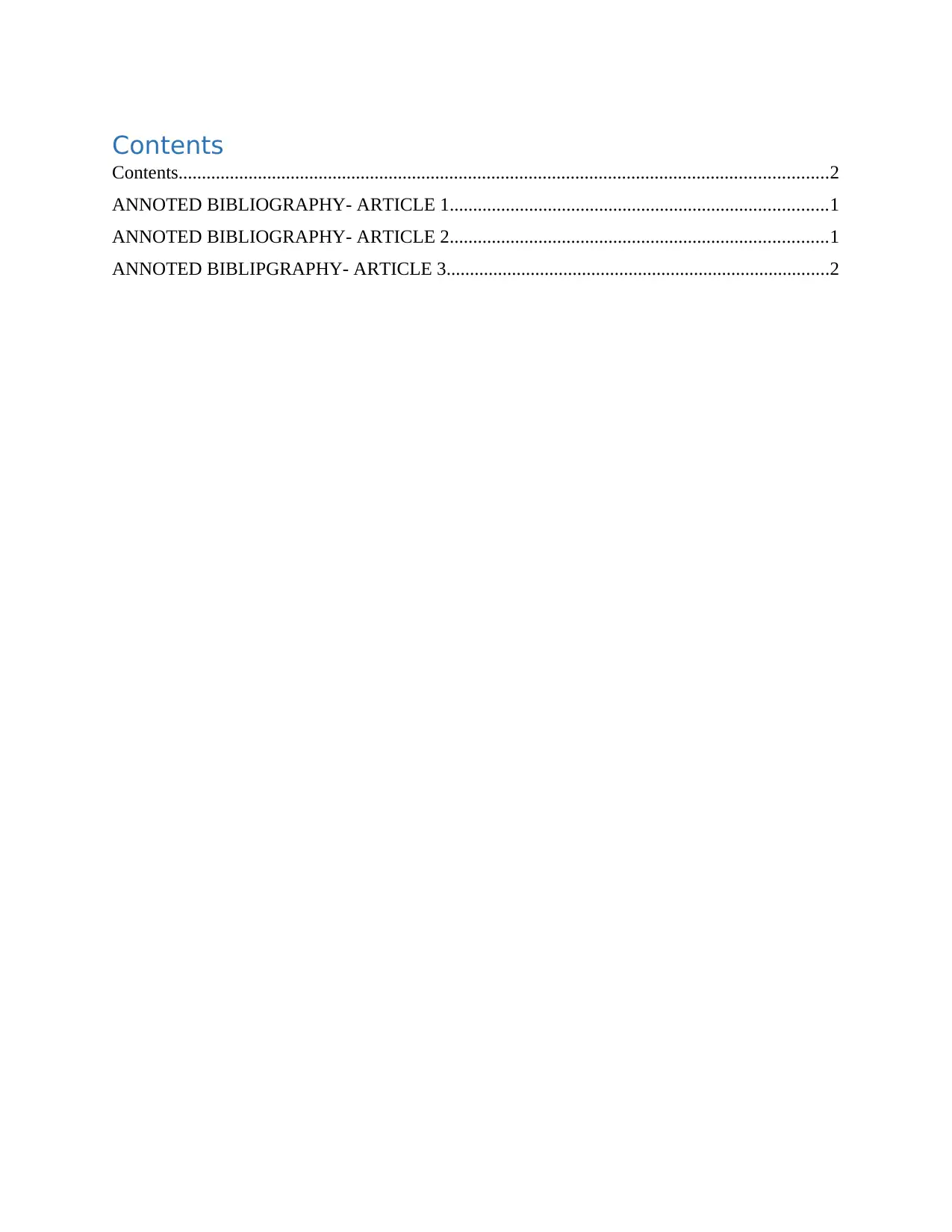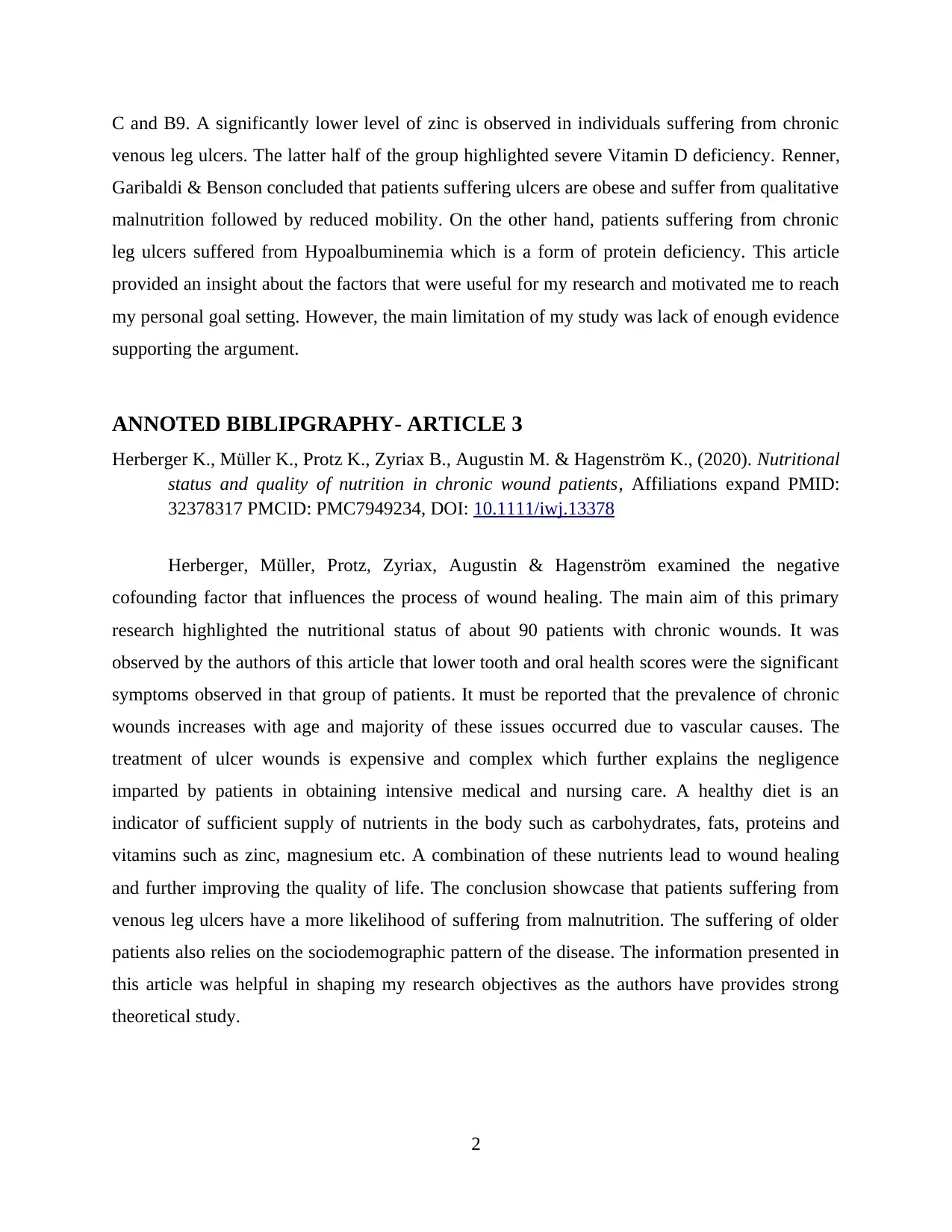Annotated Bibliography: Impact of Nutrition on Chronic Wounds
VerifiedAdded on 2023/06/07
|4
|825
|464
Annotated Bibliography
AI Summary
This annotated bibliography examines the crucial role of nutrition in wound healing, drawing upon three research articles. The first article emphasizes the direct link between nutrition and wound healing, highlighting how nutritional deficiencies can lead to chronic wounds and impaired healing processes, with potential benefits from vitamin D and folic acid supplements. The second article presents a cross-sectional analysis of patients with chronic leg ulcers and acute wounds, revealing that patients with chronic venous leg ulcers often exhibit higher BMI and serum levels but lower levels of essential vitamins and minerals, while those with acute surgical wounds show severe Vitamin D deficiency. The third article investigates the nutritional status of patients with chronic wounds, noting that lower tooth and oral health scores, along with sociodemographic factors, can influence the likelihood of malnutrition and impact wound healing, emphasizing the need for a healthy diet rich in essential nutrients. These articles collectively underscore the importance of nutritional support in wound management and improving the quality of life for patients with chronic wounds.
1 out of 4





![[object Object]](/_next/static/media/star-bottom.7253800d.svg)